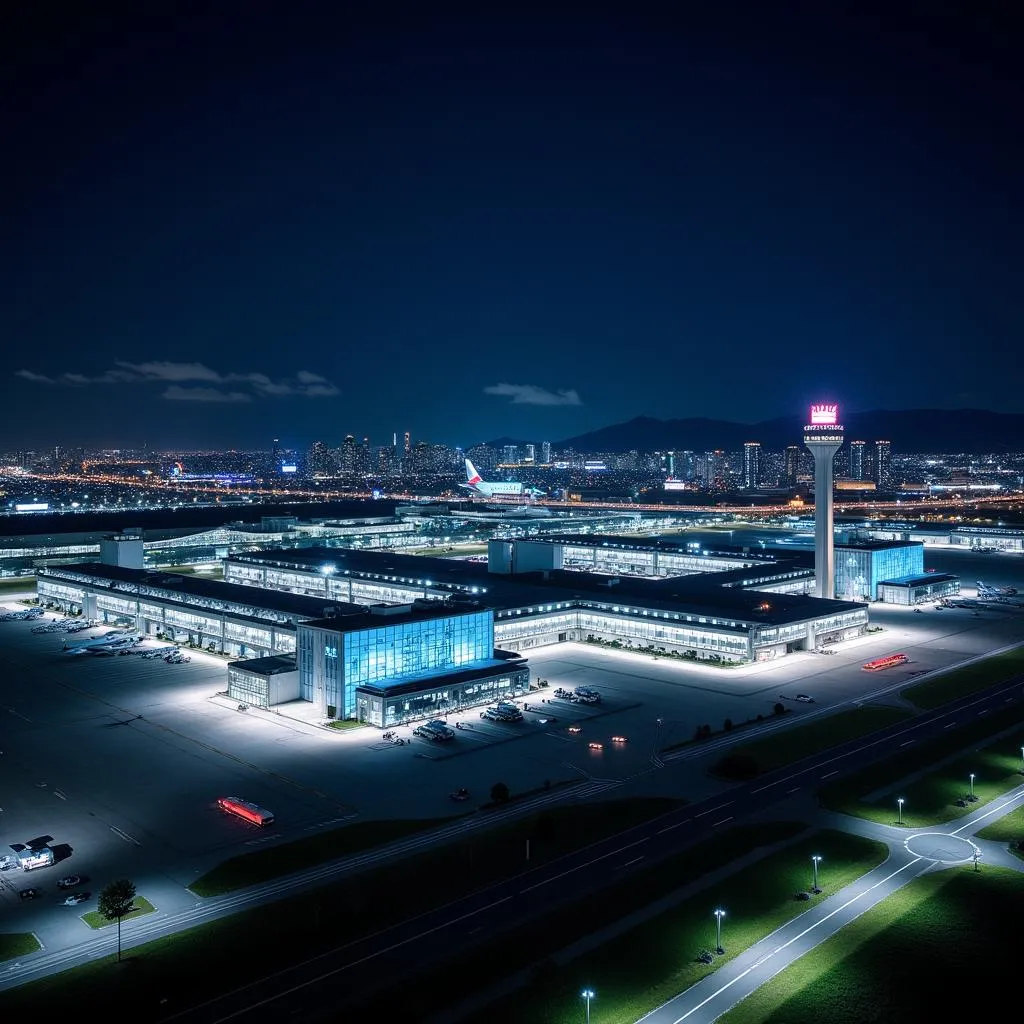From bustling international gateways to charming regional airstrips, airports are more than just transportation hubs. They are gateways to new experiences, connecting people and cultures across the globe. Some airports transcend their functional purpose to become iconic landmarks, celebrated for their architectural grandeur, operational efficiency, or historical significance. This exploration delves into the realm of Famous Airports, uncovering the unique characteristics that elevate them to global recognition.
 London Heathrow Airport Terminal Interior
London Heathrow Airport Terminal Interior
A Glimpse into Aviation History: Airports that Made History
Airports serve as tangible reminders of aviation’s remarkable evolution. Some airports bear witness to pivotal moments in history, forever etching their names in the annals of aviation. For instance, London Heathrow Airport, now a global aviation hub, began as a humble airfield used for test flights. Similarly, Charles de Gaulle Airport in Paris, named after the iconic French leader, played a crucial role in post-war Europe, symbolizing the continent’s recovery and reconnection with the world. These historical airports offer a fascinating glimpse into the past, showcasing how far aviation has come and the pivotal role these hubs have played.
Architectural Marvels: Airports Redefining Design
Airports are increasingly becoming architectural showcases, pushing the boundaries of design and engineering. These modern marvels incorporate innovative materials, sustainable technologies, and awe-inspiring aesthetics. Singapore Changi Airport, often lauded as one of the world’s best, boasts a breathtaking indoor waterfall, lush gardens, and cutting-edge facilities, seamlessly blending nature and technology. Similarly, Dubai International Airport, with its soaring arches and futuristic ambiance, embodies the city’s ambition and architectural prowess. These architectural marvels not only elevate the travel experience but also serve as inspiring landmarks that reflect the spirit of their respective cities.
 Singapore Changi Airport Indoor Waterfall
Singapore Changi Airport Indoor Waterfall
Beyond the Runway: Airports as Destinations
Airports are no longer merely transit points; they have evolved into destinations in their own right. Many airports now offer a wide array of amenities and entertainment options, catering to the needs of travelers seeking comfort, convenience, and leisure. Incheon International Airport near Seoul, South Korea, features a golf course, ice skating rink, and a traditional Korean cultural experience center, providing travelers with diverse options to unwind and explore. Similarly, T3 terminal Delhi airport offers a range of shopping, dining, and entertainment options, making it a destination in itself for travelers passing through the Indian capital.
Operational Efficiency: Airports Setting New Standards
Behind the scenes, operational efficiency is paramount in ensuring the smooth functioning of these complex transportation hubs. Airports like Tokyo Haneda Airport and Munich Airport are renowned for their punctuality, streamlined processes, and advanced baggage handling systems. They utilize cutting-edge technology, data analytics, and strategic planning to optimize operations, minimize delays, and provide travelers with a seamless journey. These airports exemplify how meticulous planning and technological innovation can enhance the overall travel experience.
Local Flavor: Airports Reflecting Cultural Identity
Many airports strive to capture the essence of their location, showcasing local culture, art, and cuisine. Denver International Airport, for example, features large-scale sculptures of indigenous wildlife, celebrating Colorado’s natural beauty. Hotel Airport City Delhi provides travelers with a taste of Indian hospitality and culture just steps away from the airport. These touches of local flavor enhance the traveler’s journey, providing a glimpse into the destination’s unique character and creating a memorable first impression.
The Future of Famous Airports: Sustainability and Innovation
As aviation continues to evolve, so too will the airports of the future. Sustainability and technological innovation are driving forces shaping the next generation of aviation hubs. Airports are increasingly adopting eco-friendly practices, such as solar power, energy-efficient designs, and sustainable waste management systems. Additionally, advancements in biometrics, artificial intelligence, and robotics are poised to revolutionize the airport experience, making travel more seamless and efficient.
 Tokyo Haneda Airport Exterior Night
Tokyo Haneda Airport Exterior Night
Conclusion
From their historical significance to their architectural splendor and operational excellence, famous airports around the world continue to captivate travelers. Whether it’s the bustling terminals of near Delhi airport or the serene gardens of Singapore Changi, these aviation hubs offer a glimpse into the ever-evolving world of travel. As technology advances and sustainability takes center stage, it will be fascinating to witness how famous airports continue to shape the future of aviation.
FAQs About Famous Airports
1. What makes an airport famous?
Several factors contribute to an airport’s fame, including its historical significance, architectural design, operational efficiency, amenities, and cultural representation.
2. Which airport is considered the busiest in the world?
Hartsfield-Jackson Atlanta International Airport (ATL) consistently ranks among the busiest airports globally, handling millions of passengers annually.
3. Are there any airports with unique features?
Yes, many airports boast distinctive features. For example, Singapore Changi Airport has a stunning indoor waterfall, while Dubai International Airport is known for its futuristic architecture.
4. How do airports prioritize sustainability?
Airports are increasingly implementing sustainable practices such as using solar power, incorporating energy-efficient designs, and promoting responsible waste management.
5. What technological advancements can we expect to see in future airports?
Biometrics, artificial intelligence, and robotics are expected to play significant roles in enhancing airport security, streamlining check-in processes, and personalizing travel experiences.
Need help planning your next trip? Contact us at Phone Number: +13089626264, Email: [email protected] or visit us at 404 Bothwell St, Oxford, NE 68967, USA. Our 24/7 customer support team is here to assist you.

